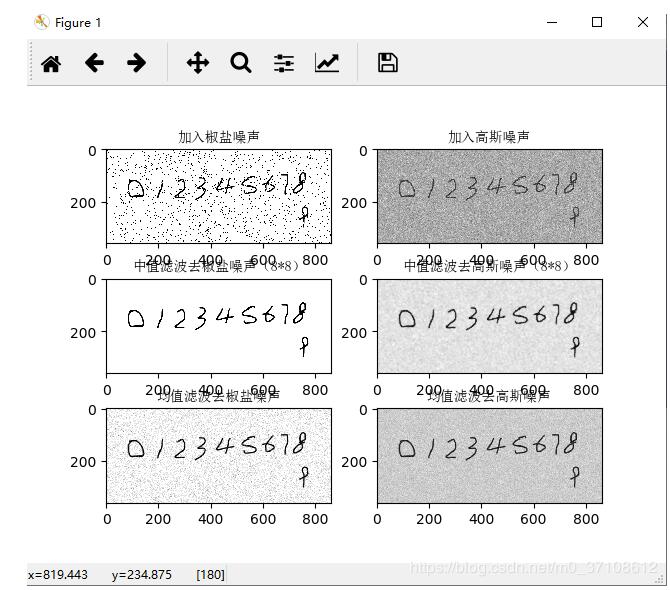Python 单元测试(unittest)的使用小结
测试目录
项目的整体结构可以参考“软件目录开发规范”,这里单说测试目录。一般都是在项目里单独创建一个测试目录,目录名就是“tests”。
关于目录的位置,一种建议是,在项目名(假设项目名是Foo)的一级子目录下创建二级子目录 “Foo/foo/tests” 。但是这样可能是因为用起来不方便,有很多是按下面的做法。不过下面的示例我还是用这个方法来创建测试目录。
还可以把测试目录向上移一层,作为一级子目录,直接创建在项目之下 “Foo/tests”。参考django、scrapy、flask都是这样的做法。
测试函数
标题的意思是对函数(def)进行测试,相对于测试类(class)。
学习测试,得有要测试的代码。下面是一个简单的函数,接收城市名和国家名,返回一个格式为“City, Country“这样的字符串:
# UnitTest/unit_test/utils/city_functions.py def get_city_info(city, country): city_info = "%s, %s" % (city, country) return city_info.title()
接下来就对上面的这个函数进行测试。
手动测试
现在来写一个使用这个函数的程序:
# UnitTest/unit_test/test/cities.py
try:
from unit_test.utils.city_functions import get_city_info
except ModuleNotFoundError:
import sys
sys.path.append('../..')
from unit_test.utils.city_functions import get_city_info
print("Enter 'q' at any time to quit.")
while True:
city = input("city name: ")
if city == 'q':
break
country = input("country name: ")
if country == 'q':
break
fullname = get_city_info(city, country)
print("\tcity info:", fullname)
然后运行的结果:
Enter 'q' at any time to quit.
city name: shanghai
country name: china
city info: Shanghai, China
city name: qProcess finished with exit code 0
上面这样是手动测试,还是得有一种自动测试函数输出的高效方式。如果能够对get_fullname()进行自动测试,就能始终确信,给这个函数提供测试过的姓名后,它能返回正确的结果。尤其是在对函数进行修改的前后。
模块导入路径的问题
PyCharm会自动把项目目录加到环境变量里去,在PyCharm里执行都没问题。但是如果不用PyCharm而是单独运行,这个目录结构应该会有点问题,会找不到需要测试的函数。简单点就是把测试用例和被测试的函数放到同一个目录里,然后改一下 from import 就可以正常运行了。或者自己手动添加环境变量,就像例子里那样。
单元测试-unittest
Python标准库中的模块unittest提供了代码测试工具。
创建测试用例
为函数编写测试用例,可先导入模块unittest以及要测试的函数,再创建一个继承unittest.TestCase的类,并编写一系列方法对函数行为的不同方面进行测试。
下面是一个只包含一个方法的测试用例:
# UnitTest/unit_test/test/test_city_functions.py
import unittest
try:
from unit_test.utils.city_functions import get_city_info
except ModuleNotFoundError:
import sys
sys.path.append('../..')
from unit_test.utils.city_functions import get_city_info
class CitiesTestCase(unittest.TestCase):
"""测试city_functions.py"""
def test_city_country(self):
city_info = get_city_info('shanghai', 'china')
self.assertEqual(city_info, 'Shanghai, China')
def test_New_York(self):
city_info = get_city_info('new york', 'America')
self.assertEqual(city_info, 'New York, America')
if __name__ == '__main__':
unittest.main()
命名的规则和建议:
- 类名,可以任意起名,但是最好看起来和测试有关并包含Test字样。
- 方法名,名字必须以“test_”开头,所有以“test_”开头的方法,都会自动运行
在测试的方法的最后,使用了unittest类最有用的功能之一:一个断言方法。来检查得到的结果和我们预期的结果是否一致。
输出的效果
最后一行 unittest.main() 让Python运行这个文件中的测试。执行程序后得到如下的输出:
.
----------------------------------------------------------------------
Ran 1 test in 0.000sOK
运行测试用例时,每完成一个单元测试,Python都打印一个字符:
- 测试通过时打印一个句点;
- 测试引发错误时打印一个E;
- 测试导致断言失败时打印一个F。
这就是你运行测试用例时,在输出的第一行中看到的句点和字符数量各不相同的原因。如果测试用例包含很多单元测试,需要运行很长时间,就可通过观察这些结果来获悉有多少个测试通过了。
PyCharm对单元测试做了自己的优化,输出看不到上面的点,而是有更加漂亮的展示方式。
测试不通过
现在看下测试不通过的效果。这里不修改测试用例,而是对get_city_info()函数做一个update,现在还要显示城市的人口数量:
def get_city_info(city, country, population): city_info = "%s, %s - 人口: %d" % (city, country, population) return city_info.title()
这次再执行测试用例,输出如下:
E
======================================================================
ERROR: test_city_country (__main__.CitiesTestCase)
----------------------------------------------------------------------
Traceback (most recent call last):
File "test_city_functions.py", line 17, in test_city_country
city_info = get_city_info('shanghai', 'china')
TypeError: get_city_info() missing 1 required positional argument: 'population'----------------------------------------------------------------------
Ran 1 test in 0.001sFAILED (errors=1)
这里看的是E而不是之前的点,表示有一个错误。
测试未通过的处理
这里不要去修改之前的测试用例。假设update之前的函数已经在项目内使用起来了,现在测试不通过,表示之前调用这个函数的代码都有问题。如果不想改项目里其它的代码,这里先尝试修改get_city_info()函数,让它能够通过测试,也可以加上新的功能:
# UnitTest/unit_test/utils/city_functions.py
def get_city_info(city, country, population=None):
if population:
city_info = "%s, %s - 人口: %d" % (city, country, population)
else:
city_info = "%s, %s" % (city, country)
return city_info.title()
现在的各个版本的update才是兼容旧版本的代码,这次测试用例就可以通过了。
添加新测试
之前的测试用例只能验证就的功能,现在添加了新功能,是否没问题,还得通过测试来进行验证:
# UnitTest/unit_test/test/test_city_functions.py
class CitiesTestCase(unittest.TestCase):
"""测试city_functions.py"""
def test_city_country(self):
city_info = get_city_info('shanghai', 'china')
self.assertEqual(city_info, 'Shanghai, China')
def test_New_York_population(self):
city_info = get_city_info('new york', 'America', 8537673)
self.assertEqual(city_info, 'New York, America - 人口: 8537673')
现在新功能的测试用例也用了,并且2个测试都能通过。以后如果还需要对get_city_info()函数进行修改,只要再运行测试就可以知道新的代码是否会对原有的项目有影响。
断言方法
模块在unittest.TestCase类中提供了很多断言方法,之前已经用一个了。下面是6个常用的断言方法:
- assertEqual(a, b) : 核实a == b
- assertNotEqual(a, b) : 核实a != b
- assertTrue(x) : 核实x为True
- assertFalse(x) : 核实x为False
- assertIn(item, list) : 核实item在list中
- assertNotIn(item, list) : 核实item不在list中
你只能在继承unittest.TestCase的类中使用这些方法。
测试类
前面的内容只是对函数进行测试。很多时候都会用到类,因为还需要能够证明类也可以正常的运行。类的测试与函数的测试相似,其中大部分工作都是测试类中方法的行为,但存在一些不同之处。
准备要测试的类
先编写一个类来进行测试,这个类里存储了一个课程名,以及学习该课程的学员:
# UnitTest/unit_test/course.py
class CourseManage(object):
def __init__(self, course):
self.course = course
self.students = []
def show_course(self):
print("课程:", self.course)
def add_student(self, name):
self.students.append(name)
def show_students(self):
print("所有学员:")
for student in self.students:
print('-', student)
为证明CourseManage类工作正常,再编写一个使用它的程序:
from unit_test.course import CourseManage
course = CourseManage("Python")
course.show_course()
print("准备录入学员...")
print("Enter 'q' at any time to quit.\n")
while True:
resp = input("Student's Name: ")
if resp == 'q':
break
if resp:
course.add_student(resp.title())
print("\n录入完毕...")
course.show_students()
这段程序定义了一门课程,并使用课程名创建了一个CourseManage对象。接下来主要就是调用对象的add_student()方法来录入学员名字。输入完毕后,按q能退出。最后会打印所有的学员。
所有的输入和输出如下:
课程: Python
准备录入学员...
Enter 'q' at any time to quit.Student's Name: oliver queen
Student's Name: barry allen
Student's Name: kara
Student's Name: sara lance
Student's Name: q录入完毕...
所有学员:
- Oliver Queen
- Barry Allen
- Kara
- Sara LanceProcess finished with exit code 0
编写类的测试用例
下面来编写一个测试,对CourseManage类的行为的一个方面进行验证。如果用户输入了某个学员的名字,这个名字可以被存储在self.students的列表里。所以,需要做的是在学员被录入后,使用assertIn()这个断言方法:
# UnitTest/unit_test/test/test_course.py
import unittest
from unit_test.course import CourseManage
class TestCourseManage(unittest.TestCase):
def test_add_student(self):
course = CourseManage("Python")
name = 'snart'
course.add_student(name.title())
self.assertIn('Snart', course.students)
if __name__ == '__main__':
unittest.main()
上面的方法只验证了录入一个学员的情况,而大多数情况下都是有很多学员的。所以,还要添加一个方法,验证录入多个学员是否正常:
class TestCourseManage(unittest.TestCase):
def test_add_student(self):
course = CourseManage("Python")
name = 'snart'
course.add_student(name.title())
self.assertIn('Snart', course.students)
def test_add_students(self):
course = CourseManage("Python")
name_list = ['oliver queen', 'barry allen', 'kara', 'sara lance']
for name in name_list:
course.add_student(name.title())
for name in name_list:
self.assertIn(name.title(), course.students)
setUp() 方法
在上面的例子里,每个测试方法中都创建了一个实例。但是还有一种需求是,我希望只创建一个实例,但是要在多个方法里对这个实例进行操作来反复验证。在unittest.TestCase类包含方法setUp(),就可以只实例化一次,并可以在每个测试方法中使用。如果在TestCase类中包含了方法setUp(),Python会先运行它,再运行各个以test_打头的方法。
简单点说,setUp()方法就是在父类里预留的一个钩子,会在其他测试方法运行前先运行:
import unittest
from unit_test.course import CourseManage
class TestCourseManage(unittest.TestCase):
def setUp(self):
self.course = CourseManage("Python")
self.name_list = ['oliver queen', 'barry allen', 'kara', 'sara lance']
def test_add_student(self):
name = 'snart'
self.course.add_student(name.title())
self.assertIn('Snart', self.course.students)
def test_add_students(self):
for name in self.name_list:
self.course.add_student(name.title())
for name in self.name_list:
self.assertIn(name.title(), self.course.students)
if __name__ == '__main__':
unittest.main()
测试自己编写的类时,使用setUp()方法会让测试方法编写起来更容易,下面是建议的做法:
在setUp()方法中创建一系列实例并设置它们的属性,再在测试方法中直接使用这些实例。相比于在每个测试方法中都创建实例并设置其属性,这要容易得多。
小结
如果你在项目中包含了初步测试,其他程序员将更敬佩你,他们将能够更得心应手地尝试使用你编写的代码,也更愿意与你合作开发项目。如果你要跟其他程序员开发的项目共享代码,就必须证明你编写的代码通过了既有测试,通常还需要为你添加的新行为编写测试。
请通过多开展测试来熟悉代码测试过程。对于自己编写的函数和类,请编写针对其重要行为的测试,但在项目早期,不要试图去编写全覆盖的测试用例,除非有充分的理由这样做。
pytest
这篇讲的是Python内置的单元测试模块。作为初学者先用着熟悉起来就很不错了。
pytest是Python最流程的单测框架之一。具体可以上GitHub参考下那些开源项目的单元测试,很多用的是这个。
以上就是本文的全部内容,希望对大家的学习有所帮助,也希望大家多多支持【听图阁-专注于Python设计】。

